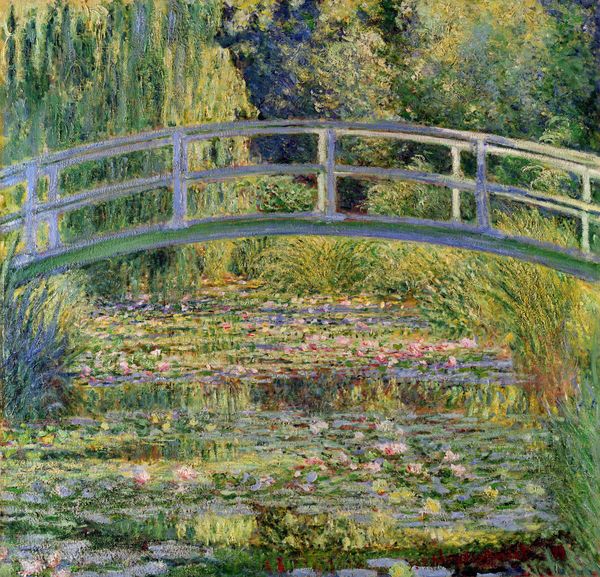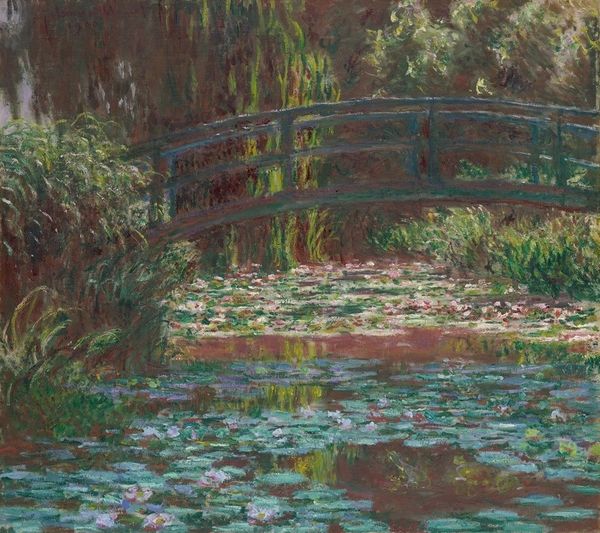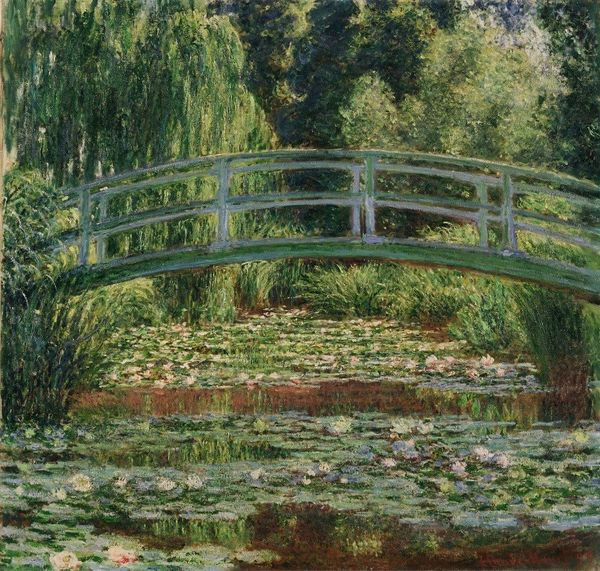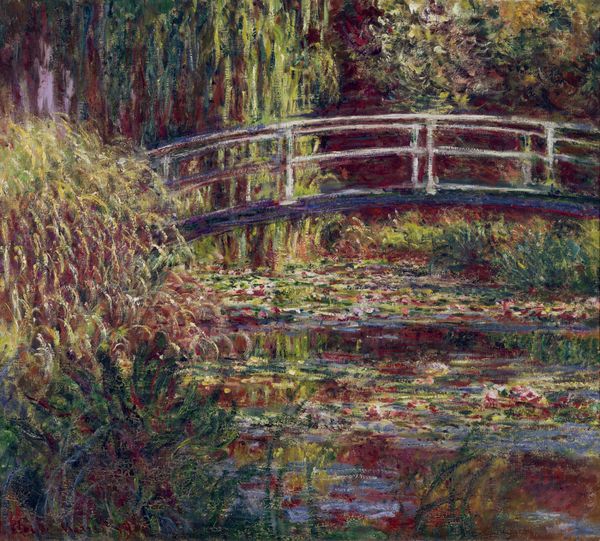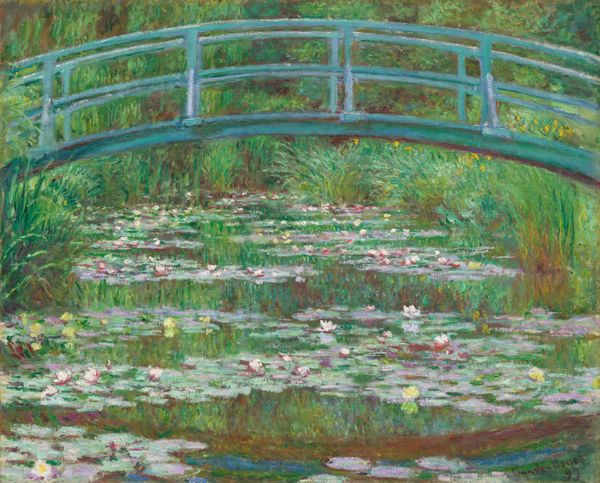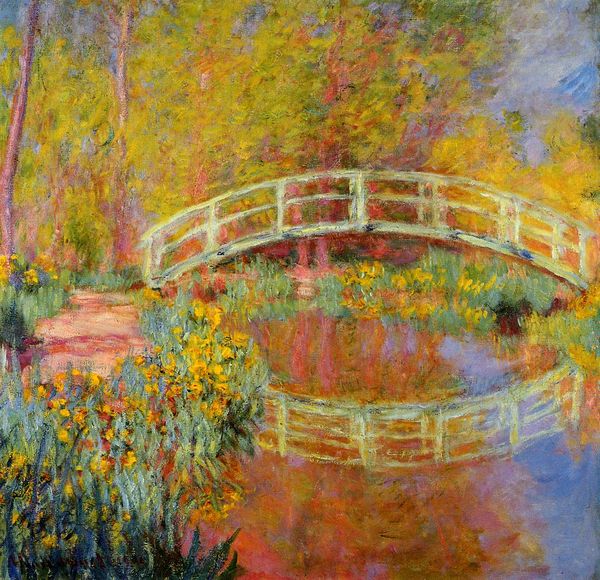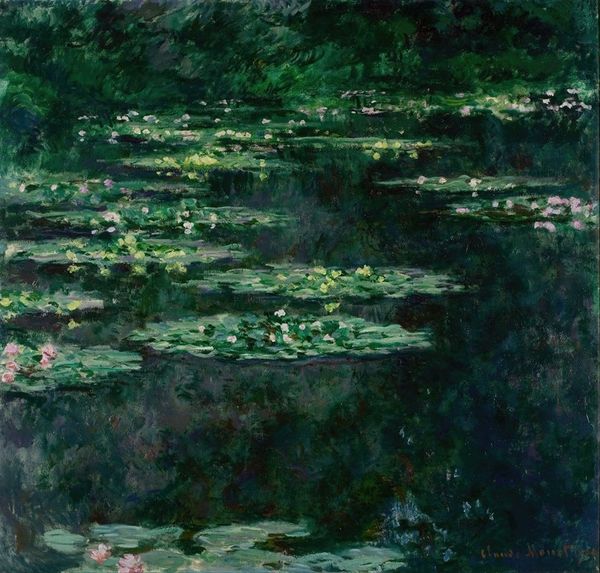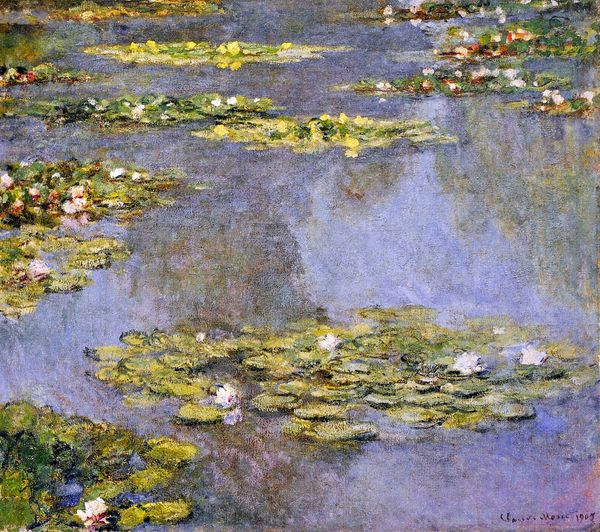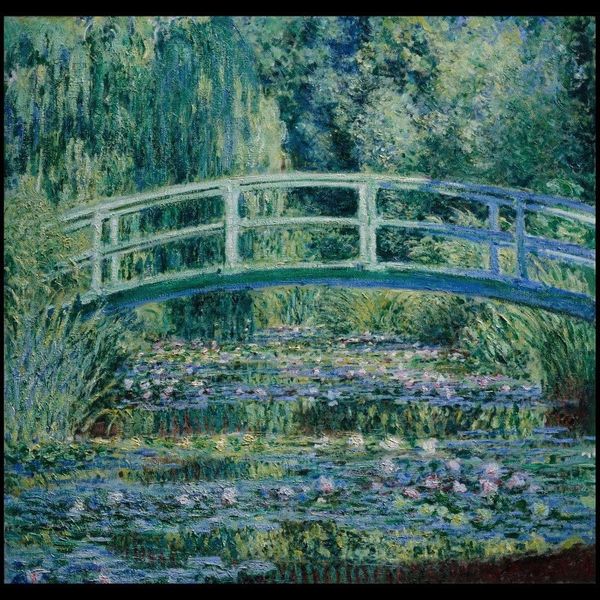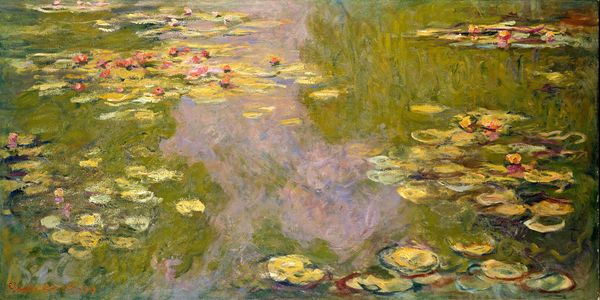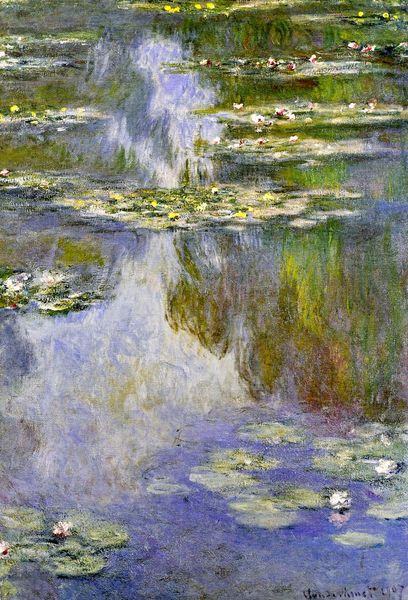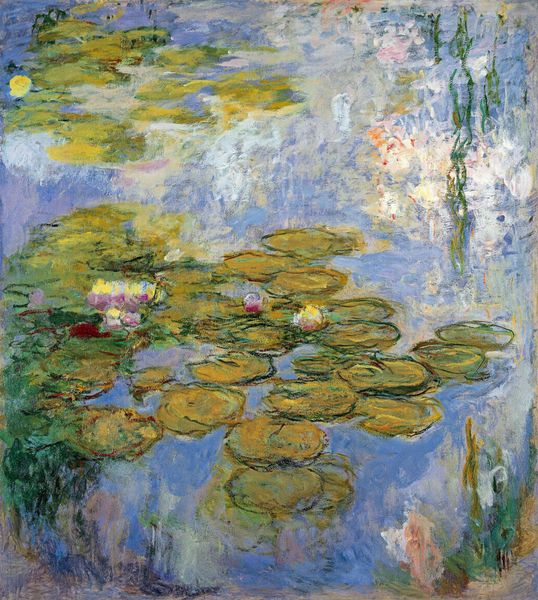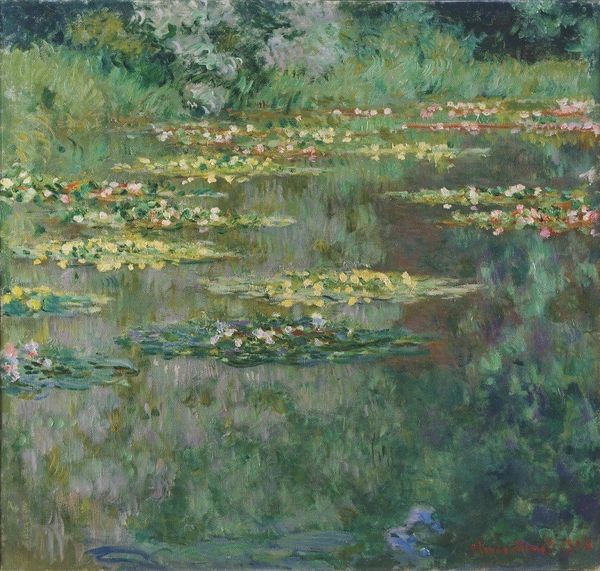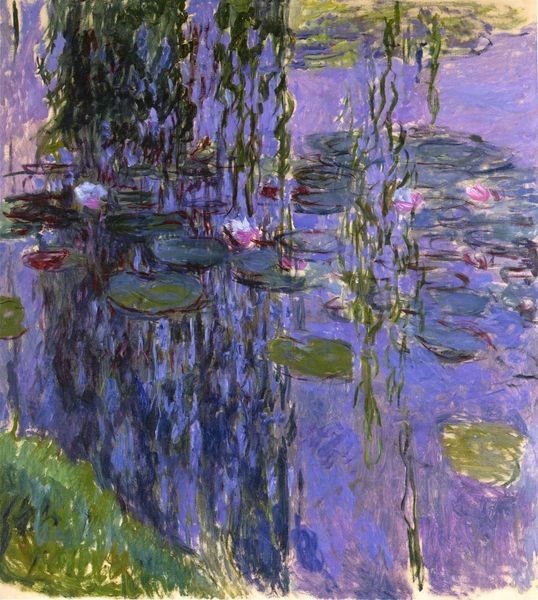
Copyright: Public domain
Claude Monet painted "The Japanese Bridge," capturing the bridge that stood in his Giverny garden. More than a mere structure, the bridge serves as a powerful symbol of connection and transition. Consider the arched form, a motif that reappears across cultures and epochs. From ancient Roman aqueducts to Gothic cathedral arches, it embodies passage and transformation. In Monet's work, this archetype is refracted through the lens of Japonisme. The bridge, inspired by Japanese design, becomes a meeting point of East and West, a fusion of artistic traditions. The water lilies beneath the bridge introduce a realm of reflection and the subconscious. Water, often associated with emotions and the unconscious mind, mirrors the world above, blurring the boundaries between reality and illusion. This mirroring effect invites us to delve into our inner depths, suggesting that the bridge leads not just to another physical space but also to a deeper understanding of ourselves. The recurring motif of the bridge speaks to our collective human desire to connect, to explore, and to transcend boundaries, whether physical, cultural, or psychological.
Comments
No comments
Be the first to comment and join the conversation on the ultimate creative platform.
